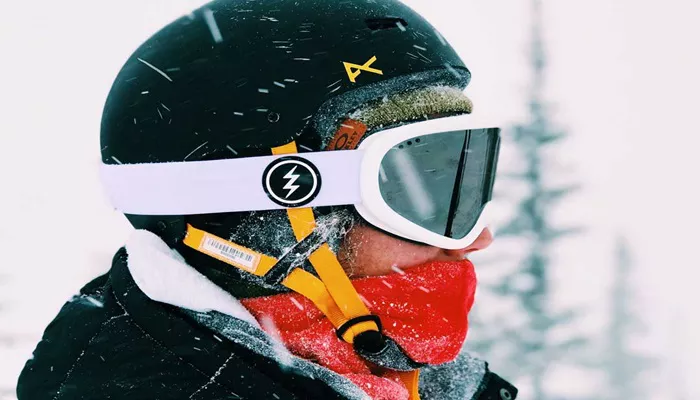Skiing is a thrilling sport that exposes participants to intense environmental conditions. Among the essential considerations for a safe experience is eye protection. While helmets and jackets often receive attention, Skiing Sunglasses play a crucial role. This article delves into whether sunglasses are a smart choice while skiing, examining factors like sunlight intensity, snow glare, wind, and UV radiation. Practical advice ensures skiers choose the right eyewear, enhancing safety and comfort.
Why Eye Protection Is Crucial in Skiing
Skiing places eyes in an environment filled with dangers. The combination of bright sunlight, reflective snow, and high altitudes can cause serious eye issues. Without adequate protection, skiers risk short-term discomfort and long-term damage. Thus, choosing the right Skiing Gear is vital, with sunglasses often being the preferred choice for many.
Sunlight and Snow Reflection
Snow reflects up to 80% of UV rays. This significant reflection increases the risk of sunburn, not just on the skin but on the eyes too. Known as photokeratitis, or snow blindness, this condition causes pain, redness, and temporary vision loss. Proper sunglasses block UV rays and reduce harmful exposure.
High Altitude UV Exposure
UV radiation intensifies with altitude. For every 1,000 feet gained, UV levels rise by approximately 4%. Ski resorts are typically located at high elevations, making UV protection essential. Quality skiing sunglasses come equipped with UV400 protection, blocking 100% of harmful rays.
Wind and Cold Protection
Chilly winds and icy air batter the eyes during high-speed descents. Without protection, eyes can dry out, leading to discomfort and impaired vision. Sunglasses designed for skiing often feature wrap-around styles, providing a barrier against cold gusts and flying snow.
Visibility and Contrast Enhancement
On snowy slopes, distinguishing terrain variations is challenging. Specialized lenses, like polarized or mirrored types, reduce glare and boost contrast. Enhanced visibility allows better reaction times and safer maneuvering, vital during rapid descents or navigating rough terrain.
Choosing the Right Skiing Sunglasses
Not all sunglasses are created equal. Skiing demands eyewear tailored for specific needs. Important features include:
- 100% UV protection
- Polarized or photochromic lenses
- Impact-resistant frames
- Wrap-around design for wind defense
- Anti-fog coatings
Differences Between Skiing Sunglasses and Ski Goggles
Sunglasses and goggles serve similar purposes but excel in different conditions. Goggles provide a tighter seal, better for stormy or powder-heavy days. Sunglasses offer lighter weight, more ventilation, and are preferred on sunny, mild days. Many skiers carry both and select based on the day’s forecast and activity intensity.
Advantages of Skiing Sunglasses
Sunglasses provide several benefits:
- Superior airflow reduces fogging
- Lighter and more comfortable for casual skiing
- Easy to adjust and remove
- Often more stylish and versatile
Potential Downsides
While beneficial, sunglasses aren’t perfect for every skiing condition. Downsides include:
- Less coverage during blizzards or heavy snow
- Greater risk of falling off during aggressive movements
- Limited compatibility with full-face helmets
Ideal Conditions for Wearing Sunglasses While Skiing
Sunny days, spring skiing, and mild weather conditions are ideal for sunglasses. They excel during warm afternoons when visibility is high, and precipitation is low. Always evaluate weather before deciding on eyewear.
Best Lens Colors for Skiing
Lens tint plays a crucial role in enhancing vision:
- Brown or amber lenses: Increase contrast
- Yellow lenses: Improve depth perception in low light
- Dark gray lenses: Best for bright, sunny days
- Mirrored lenses: Reduce glare, perfect for intense sun
Polarized Versus Non-Polarized Lenses
Polarized lenses cut glare by filtering reflected light. This makes them ideal for reducing eye strain during sunny skiing sessions. Non-polarized lenses, however, might be preferable in low-light or flat-light conditions where polarization could obscure subtle snow variations.
Photochromic Lenses for Variable Light
Photochromic lenses automatically adjust their darkness based on UV exposure. These are versatile for skiers facing changing light conditions throughout the day, offering convenience without the need for switching eyewear.
Frame Considerations
Frame durability and fit are critical. Flexible, strong materials like TR90 resist cold-induced brittleness. Adjustable nose pads and rubberized temple grips ensure a snug fit, preventing slippage during dynamic skiing movements.
Fogging Issues and Solutions
Fogging is a common problem. Solutions include:
- Anti-fog lens treatments
- Ventilated frame designs
- Proper facial fit for airflow
Ensuring minimal fogging improves overall vision and safety.
Prescription Skiing Sunglasses
For skiers needing vision correction, prescription sunglasses provide clarity without sacrificing protection. Modern designs allow for stylish, protective frames equipped with custom lenses suited for outdoor sports.
Protecting Children’s Eyes
Children’s eyes are particularly vulnerable to UV damage. High-quality sunglasses sized for kids are essential. Look for sturdy designs that provide full coverage, UV protection, and comfort to encourage consistent use.
Maintenance Tips for Skiing Sunglasses
Proper care extends eyewear life:
- Rinse lenses with water to remove grit
- Use microfiber cloths for cleaning
- Store sunglasses in hard cases
- Avoid leaving in freezing or extremely hot environments
Top Brands for Skiing Sunglasses
Reputable brands offer performance and durability. Popular options include Oakley, Smith Optics, Julbo, and Native Eyewear. These brands design sunglasses specifically for winter sports, ensuring reliability on the slopes.
Cost Versus Quality
While cheap sunglasses might be tempting, investing in quality pays off. Higher-end models provide better UV protection, enhanced durability, and superior comfort, all essential for safe and enjoyable skiing.
Conclusion
Sunglasses are a smart, often essential part of Skiing Gear. They protect from intense UV rays, minimize glare, shield against wind, and improve visibility. While they might not replace ski goggles in extreme weather, sunglasses are a worthy investment for clear, sunny days on the slopes. Ensuring the right choice in lens type, frame fit, and protective features will elevate your skiing experience, keeping your eyes safe and vision sharp.

